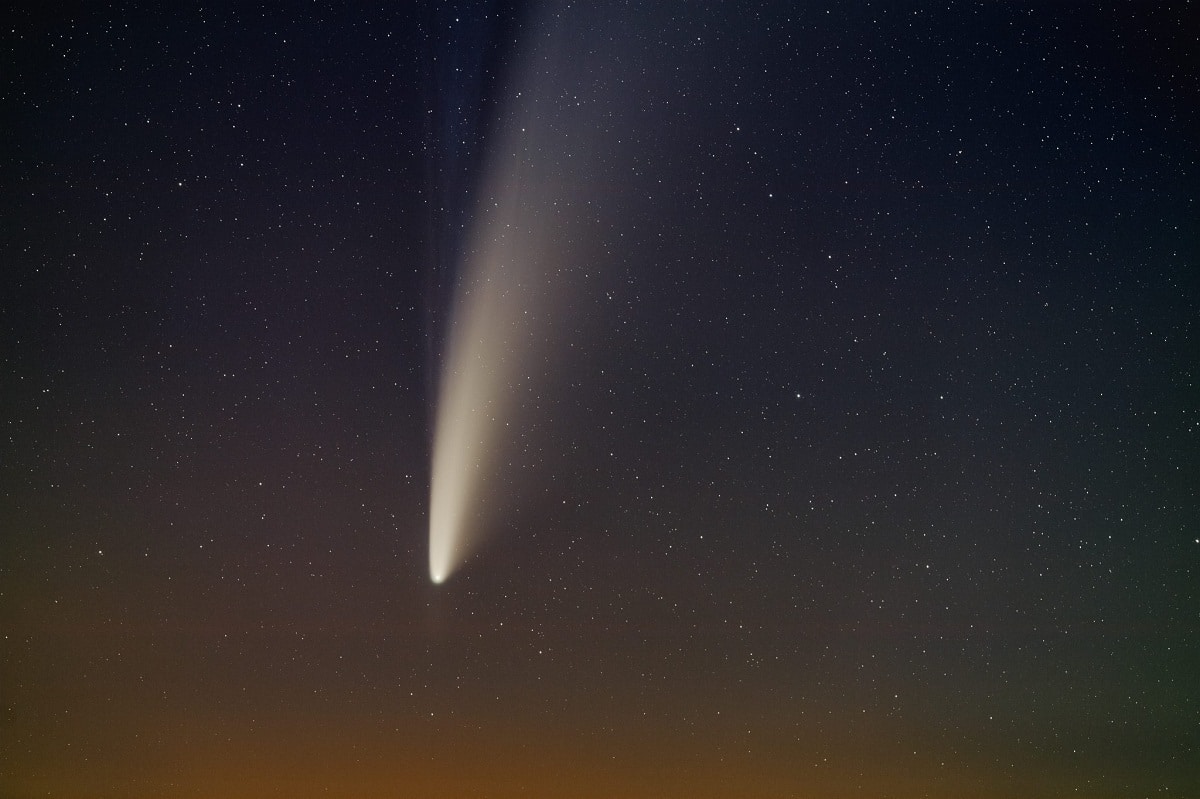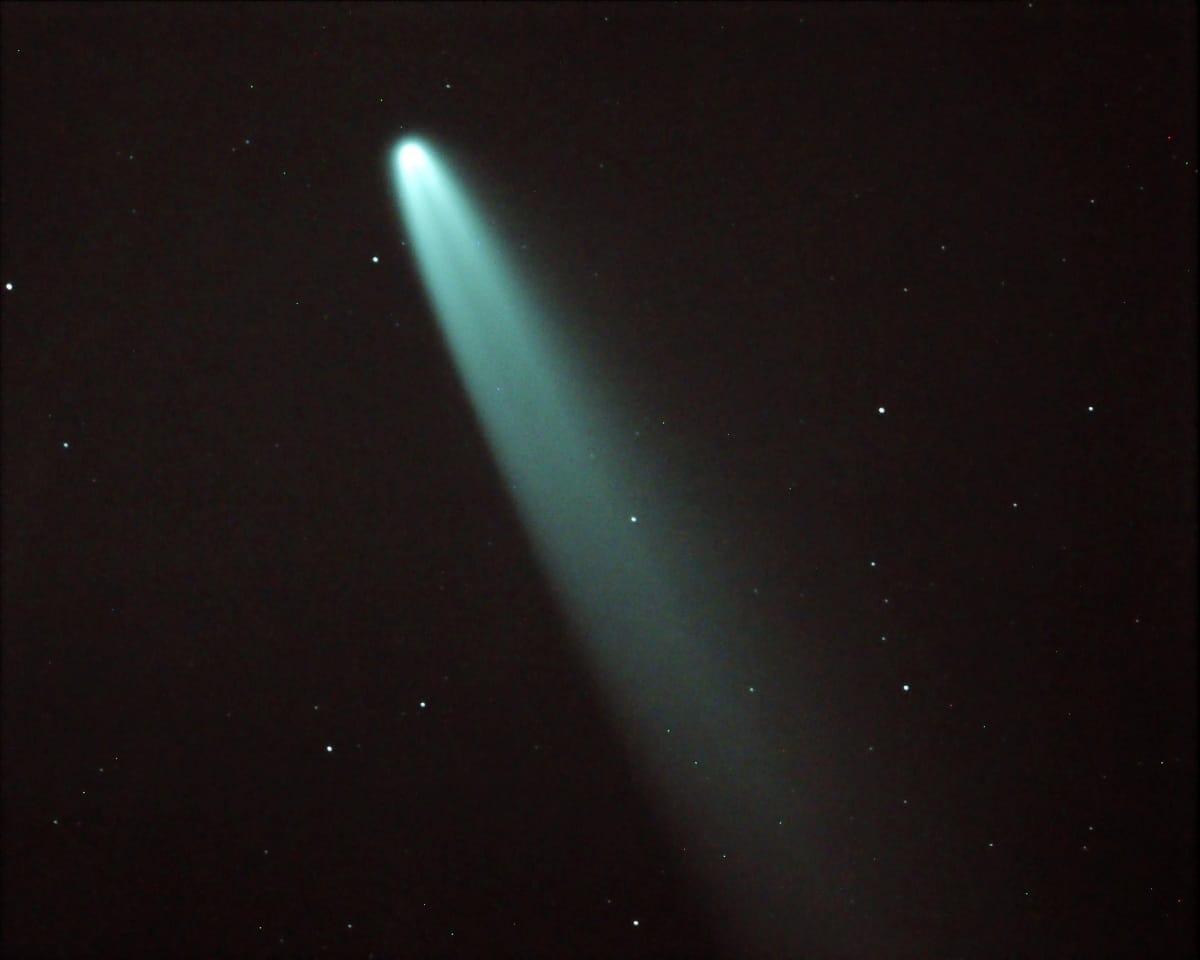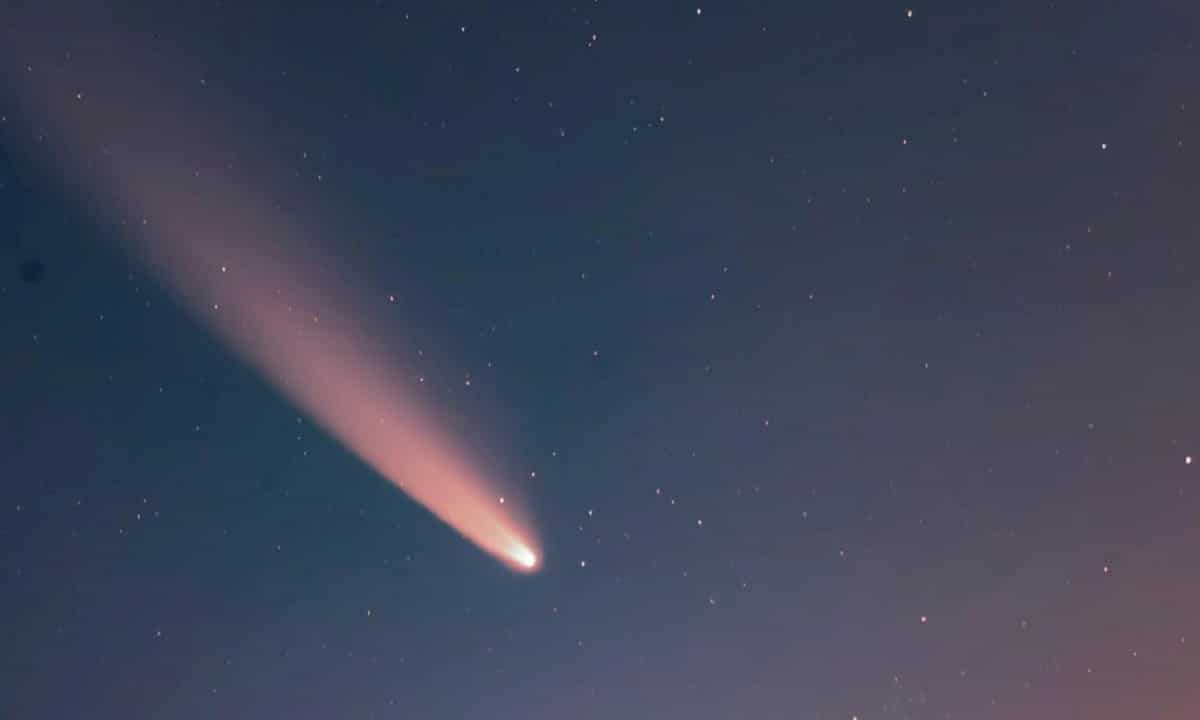
Throughout the universe there are a large number of comets that can affect our orbit. One of them is Comet Neowise. It is one of the brightest comets that have been seen from our planet. It could be seen in the month of June 2020 and it was quite impressive.
In this article we are going to tell you all the characteristics, origin and curiosities of comet Neowise.
Key features

Comet Neowise is of great scientific importance. It can be expected to have a level 2 brightness, that is, to have a high brightness, allowing us to see it from a distance without the need for telescopes or binoculars. Again, this is a kite from the Oort Cloud. These data are important because these comets often contain raw material from the nebulae that formed our solar system. Thus, they provide a great deal of information about the origin of the universe.
It is thus one of the brightest comets that have passed through the Earth in recent decades, leaving us the opportunity to see it with the naked eye during this month and passing through our planet again, previsibly, in about 6.800 years.
It could be seen for the week of July 11-17. Comet Neowise was visible shortly before sunrise (around 6 in the morning), speaking of Spain (northern hemisphere). To find it, you only had to look to the northeast, at the bottom of the horizon. At a low level, you could see the fewer obstacles on the horizon. Also, it was important to be located in an area with little light pollution to be able to appreciate the whole sky well.
The closest time it approached Earth was on July 23, and it was approximately 103 million kilometers closer to Earth at magnitude 4. The distance is large enough that there is no danger of impact, so there is no reason to worry about this phenomenon. However, although the closest date to Earth was July 23, Comet Neowise was visible to the naked eye, and its intensity remained at level 2 until Wednesday, July 15.
Origin of Comet Neowise

The commander was detected on March 27, 2020 in infrared images. It was discovered during the Near-Earth Objects project by NASA's Wide-Field Infrared Survey Explorer (WISE) space telescope. This space telescope was able to detect a 17 magnitude object that represented one, 0.8 'in angular size. Little by little some observers were able to confirm its activity as a comet, measuring a fairly condensed coma up to 2 'in diameter and a tail 20' 'in length.
Comet C / 2020 F3 (NEOWISE) has a quasi-parabolic orbit so it is not new, its previous passage was about 3.000 years ago. Its next perihelion will be on July 3, 2020 at a distance of only 0.29 AU from the Sun, and its closest approach to Earth. a few days later on July 23, 2020 at 0.69 AU from our planet.
It had an unusually rapid increase in brightness to what we are used to in other comets. The light curve stabilized throughout the month of May with absolute magnitude parameters of m0 = 7. These values correspond to a nucleus of about two kilometers in diameter and a high activity rate of n = 5. You have to know that there is an index that expresses the risk of a comet disintegration during its trajectory. In this case, Comet Neowise has a moderate decay risk based on the Bortle survival limit.
Comet Neowise Timeline

In the first 10 days of June, the brightness of Comet Neowise continued to increase, reaching level 7. According to the trend since May, its brightness was half lower than expected, although this may be due to the low altitude of southern observers. If we study the size of the observed coma, it also decreased during those dates and condensation increased. All this confirmed that the estimates were affected by low altitude and twilight.
Fortunately, between June 22 and 28, the comet approached less than 2 ° from the Sun, entering the field of the LASCO-C3 camera of the SOHO space telescope, this telescope dedicated to observing the outer atmosphere of the Sun has coronagraphs that They hide the direct light of the solar disk allowing to register, in addition to the emissions of the Sun, the bright objects that approach it angularly as it is the case of many comets.
Therefore, we could observe in the place how the comet approached perihelion in a good state, producing a dust tail and an ion tail, and allowing us to measure their brightness. Increased magnitude of brightness from 2 to 3 in 6 days. This confirmed that it stayed within the same predicted light curve. By July 11, 2020, the comet could already be observed perfectly with the naked eye below the star Capella del Auriga, still during the morning twilight but noticeably higher than days ago.
Kite moving away
After the closest approach to Earth, on July 23, the distance from the United States was 0,69. On our planet, the comet's brightness continued to decrease until it became unobservable to the naked eye at magnitude 4.5 brightness. Although viewed through binoculars, despite the moonlight, its tail was still bright and fully observable. His coma remained within an angle range of approximately 8 minutes (300.000 km absolute distance), and condensation continued to level 6 and was still very strong. The length of the tail observed with binoculars was 3 degrees.
As you can see, this comet was one of the best known and observed by experts and amateurs. I hope that with this information you can learn more about comet Neowise and its characteristics.